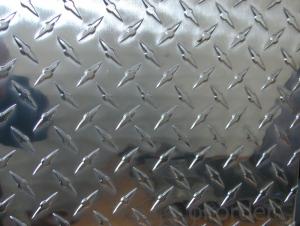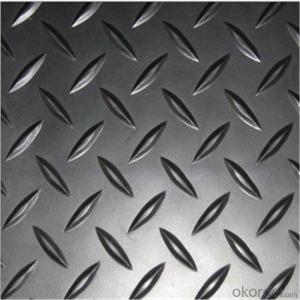48 X 96 Aluminum Diamond Plate
48 X 96 Aluminum Diamond Plate Related Searches
Led Light Bulbs For Ceiling Fixtures Led Lamps For Ceiling 42 In Ceiling Fan With Light Aluminum Coil Stock For Gutters Aluminum Foil For The Grill Hole Saw For Aluminum Plate Aluminum Tread Plate For Trailer Bow Plate For Aluminum Boat Aluminum Foil For Grow Room Aluminum Foil For Joint PainHot Searches
Stock Price For Aluminum Aluminum Coil Stock For Sale Aluminum Gutter Coil For Sale Used Aluminum Scaffolding For Sale 1/4 Aluminum Plate For Sale Aluminum Bar Stock For Sale Aluminum Round Stock For Sale Aluminum Diamond Plate For Sale Aluminum Scaffolding For Sale Craigslist 6061 Aluminum Plate For Sale Aluminum Dock Plate For Sale 7075 Aluminum Plate For Sale Aluminum Tread Plate For Sale Aluminum Checker Plate For Sale Aluminum Plate For Sale Near Me Plate Aluminum For Sale Aluminum Plate For Sale Aluminum Square Stock For Sale Aluminum Flat Stock For Sale Billet Aluminum Stock For Sale48 X 96 Aluminum Diamond Plate Supplier & Manufacturer from China
Okorder.com is a professional 48 X 96 Aluminum Diamond Plate supplier & manufacturer, offers integrated one-stop services including real-time quoting and online cargo tracking. We are funded by CNBM Group, a Fortune 500 enterprise and the largest 48 X 96 Aluminum Diamond Plate firm in China.Hot Products
FAQ
- Depending on the desired outcome, various methods can be employed to cut or shape aluminum sheets. One commonly used technique involves the utilization of a saw, such as a circular saw or a bandsaw, equipped with a carbide-tipped blade specially designed for cutting metal. This allows for the creation of straight cuts and can be employed for both thin and thick aluminum sheets. Another approach entails the use of a shear, which is a machine equipped with sharp blades to effectively cut the aluminum sheet. Shearing is particularly advantageous when it comes to swiftly and efficiently cutting straight lines, especially for thinner sheets. For more intricate shapes or curves, aluminum sheets can be cut using either a water jet cutter or a laser cutter. Water jet cutting involves the usage of a high-pressure jet of water mixed with an abrasive substance to effectively cut through the sheet. On the other hand, laser cutting employs a focused laser beam to melt or vaporize the aluminum, resulting in precise and intricate cuts. In addition to cutting, aluminum sheets can also be shaped through processes like bending, rolling, or stamping. Bending necessitates the use of a press brake to bend the sheet into the desired angle or shape. Conversely, rolling involves employing a rolling machine to gradually shape the sheet into curves or cylinders. Lastly, stamping encompasses pressing the sheet against a die to create specific shapes or patterns. Ultimately, the choice of method for cutting or shaping aluminum sheets depends on factors such as the sheet's thickness, the desired outcome, and the availability of equipment.
- Yes, aluminum sheets can be custom-cut to specific dimensions. Aluminum is a versatile material that can be easily manipulated, allowing for precise cutting to meet specific requirements. Whether it is for industrial, commercial, or personal use, aluminum sheets can be tailored to the desired dimensions, ensuring a perfect fit for any project. This customization option allows for greater flexibility and ensures that the aluminum sheets can be used in a variety of applications.
- Yes, aluminum sheet can withstand heavy loads. Aluminum is known for its high strength-to-weight ratio, making it an excellent choice for applications that require durability and load-bearing capabilities. Aluminum sheets are commonly used in industries such as aerospace, automotive, construction, and marine, where heavy loads are involved. Additionally, aluminum's inherent corrosion resistance further enhances its ability to withstand heavy loads over extended periods. However, it is important to consider the specific grade and thickness of the aluminum sheet, as different alloys and thicknesses have varying load capacities.
- Yes, aluminum sheets are suitable for electrical conductivity applications. Aluminum is a highly conductive material, with an electrical conductivity approximately 61% that of copper. This makes it a popular choice for various electrical and electronic applications where conductivity is important. Aluminum sheets are used in the construction of power transmission lines, electrical cables, bus bars, and heat sinks, among others. Additionally, aluminum is lightweight, corrosion-resistant, and has good thermal conductivity, which further enhances its suitability for electrical conductivity applications.
- Solar panels can indeed utilize aluminum sheets. Aluminum is widely employed in the manufacturing of solar panels due to its exceptional properties. Its lightweight nature, durability, and resistance to corrosion make it well-suited for enduring diverse weather conditions. Moreover, aluminum boasts excellent electrical conductivity, a crucial element for efficient energy generation in solar panels. By incorporating aluminum sheets, solar panels can guarantee longevity and optimal performance, all while diminishing the panels' overall weight and cost.
- The formability of an aluminum sheet is greatly impacted by its thickness. Generally, thinner sheets of aluminum are more easily shaped and are more malleable compared to thicker sheets. This is due to the fact that thinner sheets have less resistance to deformation and require less force to bend or stretch. On the other hand, thicker aluminum sheets have higher resistance to deformation and are less malleable. They necessitate more force and energy to shape, and are more susceptible to cracking or tearing during forming processes. Additionally, thicker sheets are more likely to experience springback, where the material partially returns to its original shape after being formed. The formability of aluminum sheets is also influenced by the specific forming process being used and the alloy composition. In certain cases, specific alloy compositions or heat treatments can enhance the formability of thicker sheets, making them easier to shape. In conclusion, the formability of an aluminum sheet is directly affected by its thickness. Thinner sheets are generally easier to shape and more malleable, while thicker sheets require more force and are less malleable. The alloy composition and specific forming processes being used can also impact the formability of aluminum sheets.
- According to the reactivity of metals, aluminum chloride (AlCl3) will not react with copper (Cu). But I am almost sure that the copper nail I put in the aluminum chloride solution became shiny and lost its copper lust. Why did this reaction happen?
- Well done on noting unexpected observations and following up. Your copper is coated with a dull coating of copper oxide. It became shiny because aluminium salts are acidic in water and the acidity dissolves the coating to form a copper salt and leaving the shiny copper. CuO + 2H3O+ ---- Cu2+ + 3H2O The reaction to form the acidity, a hydrated hydrogen ion H+(H2O) or H3O+ is fairly complex. If aluminium chloride is dissolved in a large amount of water the solution is acidic, but this has nothing to do with formation of hydrochloric acid. The solution contains hydrated aluminium ions and chloride ions: AlCl3(s) + aq → [Al(H2O)6]3+(aq) + 3Cl -(aq) The hexaqua complex ion behaves exactly like ions of similar type formed from transition metals; the small, highly charged metal ion polarises (withdraws electron density from) the water molecules that are attached to the aluminium ion through dative covalent bonds. This makes the hydrogen atoms d+ and susceptible to attack from solvent water, which is acting as a base. The complex ion is deprotonated, causing the solution to be acidic from the formation of hydroxonium ions H3O+: [Al(H2O)6]3+(aq) + H2O(l) → [Al(H2O)5OH]2+(aq) + H3O+(aq)














































